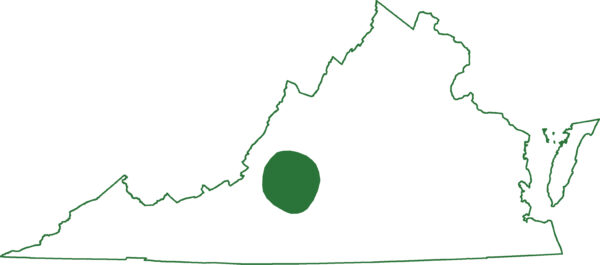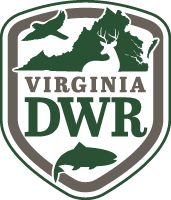Fact File
Scientific Name: Plethodon hubrichti
Classification: Amphibian
Conservation Status:
- Species of Greatest Conservation Need-Tier 1a on the Virginia Wildlife Action Plan
- Federal Species of Concern, State Special Concern
Size: Up to 5 inches
Identifying Characteristics
The body is uniformly dark brown to black with variable brassy flecks on the back that look like moss. Sides may have small spots. Belly is dark brown to gray.
Distribution:
This species is endemic to the Blue Ridge Mountains of Virginia in Rockbridge, Bedford, and Botetourt counties. They occur in mature hardwood forests with densities peaking at elevations between 2,950 and 3,600 ft.

Did You Know?
While female Peaks of Otter Salamanders at higher elevations will only reproduce biennially, females at lower elevations will reproduce annually.
Role in the Web of Life
Surface activity peaks on warm rainy or humid nights with only about 3–5% of the population typically active. They forage on a variety of invertebrates, and are occasionally found climbing trees. Home range is only a few square feet. Females deposit 1–12 eggs in June and remain with their clutch until hatching occurs in August or September.
Conservation
Tier I Species of Greatest Conservation Need in Virginia’s Wildlife Action Plan. A 1994 Conservation Agreement protects this species and its habitat.
Last updated: July 18, 2024
The Virginia Department of Wildlife Resources Species Profile Database serves as a repository of information for Virginia’s fish and wildlife species. The database is managed and curated by the Wildlife Information and Environmental Services (WIES) program. Species profile data, distribution information, and photography is generated by the Virginia Department of Wildlife Resources, State and Federal agencies, Collection Permittees, and other trusted partners. This product is not suitable for legal, engineering, or surveying use. The Virginia Department of Wildlife Resources does not accept responsibility for any missing data, inaccuracies, or other errors which may exist. In accordance with the terms of service for this product, you agree to this disclaimer.

